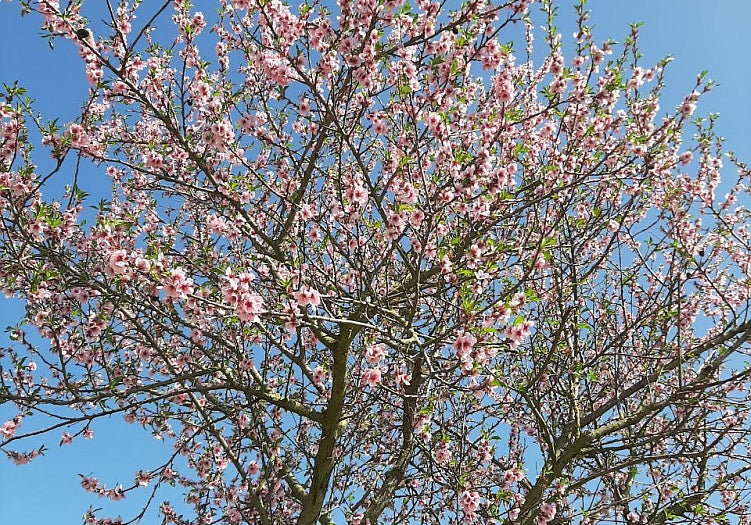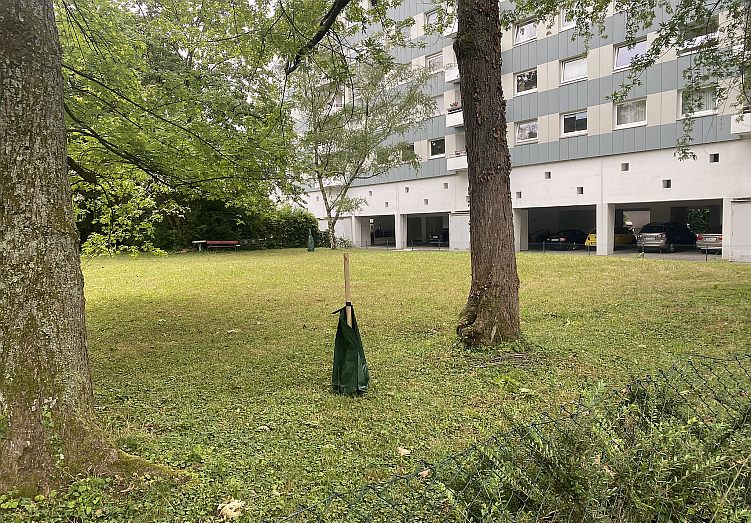Your shopping cart is currently empty.
| Subtotal | €0,00 |
| Shipping Rate | including VAT, excl. Shipping Rate |
| Total | €0,00 |
|---|
15.08.2023
The basis for this post is an excellent article, which was published by the University of Hamburg in cooperation with the Federal Office for the Environment.
Trees have one positive influence on our health.
Trees regulate that urban microclimate.
And trees help our settlements to deal with the two greatest meteorological challenges of climate change: higher temperatures and extreme precipitation events.
Trees and urban greenery as a whole are therefore an important component of urban climate adaptation strategies. But trees are also suffering from climate change, rising temperatures and longer periods of drought.
This is a problem for trees in general, also in the forests.
But especially the trees in our cities. Because the urban environment differs considerably from the original habitat of the trees.
In cities, the temperature is even higher than in rural areas due to the heat island effect. In addition, sealed areas dominate in cities, which means that a lot of water runs off without getting into the layer of earth where the tree has its roots. In addition, root growth in cities is often restricted by cramped planting pits. Another problem is compacted soil. Many trees are therefore becoming more and more popular Drought stress.

The authors of the text from Universität Hamburg write:
“The compaction of the soil and the high degree of sealing in the potential root area of the trees mean that the vital gas exchange and the infiltration of rainwater into the soil are disturbed. These site conditions, which restrict the growth and vitality of the trees, are usually reinforced for street trees, where the root space is often even more restricted than for trees in parks or in residential areas. "
The trees on the streets are exposed to even greater stress than trees in parks, for example. And young trees in particular are stressed by these trees because they have usually not yet been able to develop sufficient roots.

The authors of the text already quoted further write:
«As a result of climate change, a tendency towards more and longer dry phases is expected. (...) At the same time there will be more heavy rain events and higher temperatures. Urban trees in particular in their already extreme locations will therefore come under increasing stress in the future due to the changing climatic conditions, which will also make them more susceptible to pests and pathogens. Overall, there is therefore an increased risk that the vitality of the trees will be weakened or even have to be felled and therefore no longer able to fulfill their important function in the city. "
In order for us to have healthy tree populations in our cities in the future, it is important that we support them to get through the increasingly difficult climatic conditions.
Adaptations to the climatic changes
In the medium and long term, adjustments to tree types and locations are necessary. Some popular tree species will no longer be able to cope with the climatic changes. The authors Andreas Roloff and Sten Giller investigated which tree types can cope well with the climatic requirements. In your List The following trees seem particularly suitable: field maple, gray alder, quivering poplar, forest pine, common robinia, ginkgo, Virginian hop beech or Zerr oak.
The authors of the University of Hamburg write:
“In addition to the question of which tree species are particularly well adapted to the changing conditions and will therefore continue to grow in the city in the future, a central approach to adapting trees to climate changes is the optimization of tree locations. How can rainwater, for example, get into the planting pit? be temporarily stored in order to improve the water availability for the trees in dry periods? The selection and special stratification of certain types of soil can also help to promote the supply of water, nutrients and air for trees and thus improve the tolerance of trees to climate change.
And in the short term?
City trees, especially young street trees, often need additional irrigation. The trees can only fulfill their regulatory functions if they are healthy and have enough water.
This could be a concept that a growing number of German cities are turning to: Tree sponsorships.
The benefits of tree watering bags
- One bag contains 75 or 100 liters of water. According to GALK, this corresponds to the ideal amount for a young tree. For older trees you can also combine two bags, then it will be 150 or 200 liters per wateringßwalk.
- The water can be easily measured. When the bag is full, there are 75 or 100 liters in the bag.
- The bag can be filled up quickly and then releases the water drop by drop over several hours. The water can also seep into deeper layers of the earth, where the roots can also absorb it.
- Irrigation bags help to save water through efficient irrigation. The water arrives exactly where it is needed.
- The water evaporates less. It's either still in the bag or then in the soil, which has a little layer of mulch through the bag.
Here you will find one Overview of the baumbad products.
How tree watering bags can help mitigate the effects of climate change on urban trees
- Irrigation optimization: Tree watering bags allow for efficient water supply as they release water slowly and evenly. This ensures that the trees receive sufficient moisture even during dry periods.
- Reducing water waste: Compared to traditional irrigation methods, using tree watering bags can reduce water waste. The water goes directly to the roots without evaporating or draining unnecessarily.
- Strengthening resilience: Through continuous, sufficient irrigation, the trees become more resilient to the stress of drought stress. This will enable them to better deal with the challenges of the changing climate.
- Health promotion: Tree watering bags help promote tree health. Well-watered trees are less susceptible to diseases and pests, which is particularly important because climate change can promote the emergence of certain plant diseases.
- Supporting young trees: Young trees are particularly vulnerable to water shortages. Tree watering bags are an effective way to support and encourage young trees in the first few years of their growth.
And in the long term, a multitude of different tree species is needed to increase the resilience of the entire tree population in a city. If a tree species can no longer cope with the climatic conditions or is affected by a disease, this prevents a high proportion of trees in the city from falling out.
Do you want more tree knowledge?
That might interest you
Great idea, easy handling and everything from ordering to delivery.
Michael K.






















